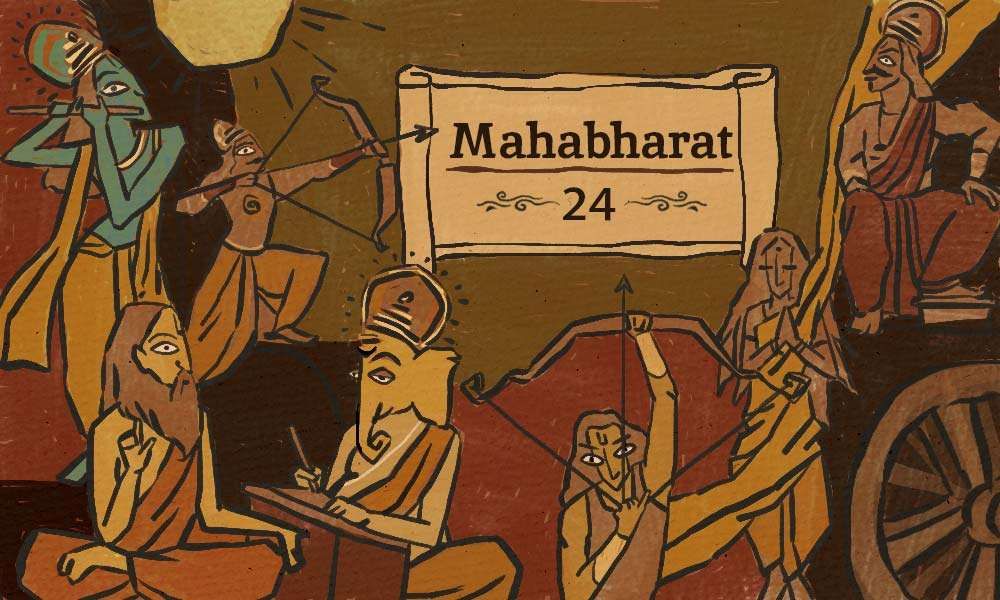Mahabharat Episode 24: Duryodhana – No Excuses for Him
Was it karmic influence that shaped Duryodhana into the villain we see in Mahabharat? Sadhguru relates Veda Vyasa’s assessment of Duryodhana and explains why criminals sometimes have more appeal than the hero – at least when viewed from a safe distance.

Q: What was Duryodhana’s past life karma for him to become such a malicious character?
Sadhguru: Veda Vyasa, who in a way composed the verses of Mahabharat, described everyone’s past lives, including Arjuna and Krishna, who were Nara-Narayana. Each of the characters in the Mahabharat is depicted as a consequence of who they were in the past, and how they are battling to change the consequence of who they are. Duryodhana was the only one who Veda Vyasa left without a past because he did not want to provide an excuse for him being the way he was, because there is no excuse for that kind of behavior, that kind of emotion, and the kind of life he lived.Subscribe
Vyasa wanted Duryodhana to be one hundred percent responsible for everything that he was. For everyone else, there is a past from which the good and the bad, the beauty and the ugliness of their character arose. But there are no such excuses for Duryodhana. The message is that for stupidity, for moments of anger and insensitivity, for blindness in emotion, thought, and action, there is a way out. But for the kind of rage and evil intention that Duryodhana constantly displayed, there is no excuse.
Thick as Thieves
This applies regardless of the fact that there were moments where he was a great, generous friend. He sought friendship everywhere and he took good care of whomever was friendly and loyal to him – better than the Pandavas in that respect. People who are leaders in the world, people who are committed to creating wellbeing for all are usually friendless. Great artists, geniuses, and scientists are friendless, but the worst criminals often have the best of friends.
Crime thrives in friendship. You know the expression “Thick as thieves.” To commit a crime, you usually need accomplices. Without the loyalty of give and take, the amount of criminal activities would be much less in the world. There have been such brilliant and notorious partners in crime that their names have been etched in people’s memory and in history books. But there is no excuse for Duryodhana being the way he was. I am sorry to say that, Duryodhana fans. There is nothing wrong with loving a beast, as long as you are at a safe distance from him.
A beast is romantic. "Tyger Tyger, burning bright" – what a beautiful poem! You can safely admire it in a cage, in a zoo or from a safari van, but if you encounter a tiger up close, hardly anyone will sing its praises. Similarly, from a distance, Duryodhana has more allure than those who are trying to work with a missionary zeal to create dharma, or anyone else for that matter. But if you ever happened to come in close contact with him without being his loyal friend, you would regret it.
A Princess in Distress
Once, Krishna was a guest in Duryodhana’s palace. Bhanumati, Duryodhana’s young, beautiful, fragile wife had no clue about what kind of character her husband was. As a princess in those days, she was trained to love her princely husband irrespective of what kind of person he was. She desperately longed for his love and attention. In reality, she was ravished in many ways but not loved. On a certain night, Duryodhana threw a wild party. People were intoxicated and wild orgies were allowed in the palace. Later, when Bhishma came to know, he cried. Never before had such sacrileges and debaucheries happened in the house of Kuru. Everything became animalistic because of this one man.
Distressed by the lack of attention from her husband, Bhanumati got drunk and deranged. When Krishna saw from across the room that she was about to stumble into a disastrous situation, he made his way through the crowd and took the risk to pick her up half-naked and carry her in his arms to her chambers, in order to save her. When he laid her down and looked at her, he teared up at the thought that such a fragile, wonderful creature was in the hands of Duryodhana.
To be continued…
Editor’s Note: A version of this article was originally published in Isha Forest Flower January 2017. Download as PDF on a “name your price, no minimum” basis or subscribe to the print version.



